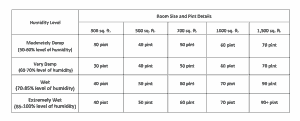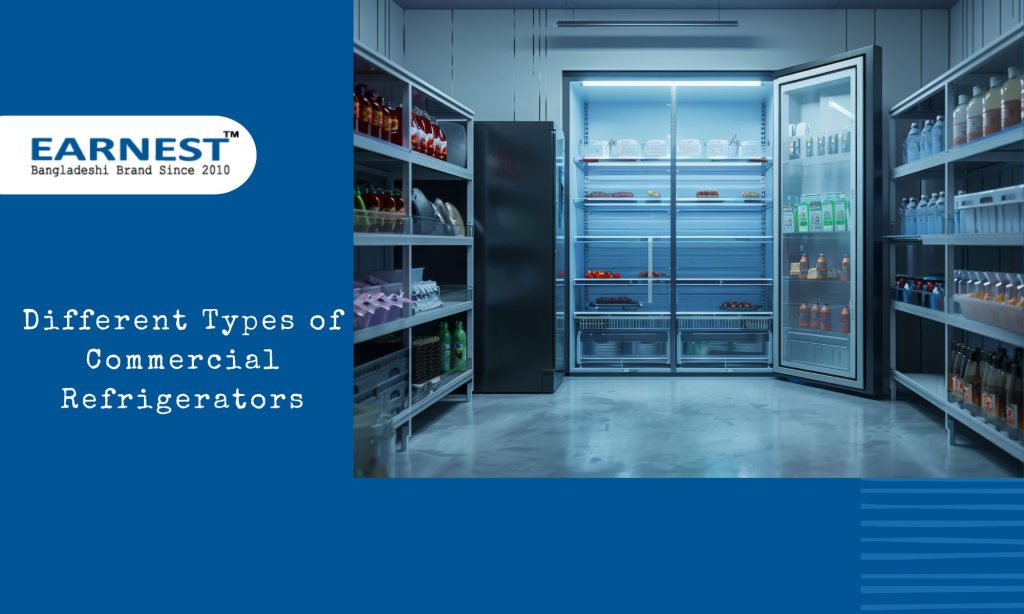Right dehumidifier selection is very much important issue for a user. Humid rooms, condensation on walls, and high moisture levels are three signs that your room needs a dehumidifier now. Humidity is a prevalent problem and can occur absolutely anywhere industrial warehouses, or basements.
Dehumidifiers are appliances that get rid of excess moisture and decrease detrimental mildew and mold growth rate. As useful as they may seem, it can be a daunting task to find the perfect dehumidifier for your room.
With various types and models available, you can find the best one through research. Read on to find out the factors you need to consider before buying a dehumidifier.
Check Your Room’s/ Warehouse Humidity Level
While there are numerous ways to check the moisture levels of your room, using a moisture meter can give you the most precise and dependable results. Moisture meters are small portable devices that you can use to detect the humidity percentage of your living space.
Alternatively, you can also rely on your sense of smell because mold and mildew can make your space smell a certain way. The easiest way is to check for condensation and dampness on the walls. The more the droplets or condensation, the higher the humidity level. Also, the ideal humidity level of the room can range anywhere between 30-45%.
A room’s moisture level is essential to consider before buying a right dehumidifier. To simplify further, a 700-800 sq. ft. room with a humidity level of 50-60% will require a 50-pint dehumidifier.
However, a room with a humidity level of over 60%, around 70-80%, will need a right dehumidifier of at least 60-pint. Thus, always check the room size and humidity level before investing in a dehumidifier.
Depending on how bad a room moisture level is, you might need a bigger right dehumidifier unit to cover a larger room.
For example, a 50-pint dehumidifier can cover a 700 sq. ft. sized room with 50-60% humidity level, but you will need at least a 60-pint dehumidifier to cover a very damp room with 70-80% humidity.
To ensure you purchase the right unit to cover a room condition, you can refer to the dehumidifier sizing chart below. Refer to the chart below to determine which dehumidifier will suit your room the best.
Dehumidifier Size Chart

Determining the Size of the Dehumidifier
For starters, crosscheck the industrial area size and the requirements of your companies. If there is condensation on walls or dampness, you will have to look for a more powerful right dehumidifier. Here are the three subdivisions of dehumidifiers:
- 30-pint dehumidifiers are ideal for moderate to very damp warehouse built-in 500 to 1500 square feet. However, if the room is highly damp (wet), then a 30-pint unit might work well in a small warehouse of around 500 sq ft.
- 40-50 pint dehumidifiers, on the other hand, are ideal for large damp warehouses of about 1,600-2,500 sq ft. Again, if you want to use this for wet (highly damp) spaces, it is ideal for spaces smaller than 1,000 sq ft.
- 60-70 pint dehumidifiers, on the contrary, can cover larger spaces like 2,500 sq ft. These dehumidifiers are utterly powerful and can handle even the wettest spaces. Much like other dehumidifiers, the effectiveness might drop slightly in spaces larger than 2,500 sq ft.
What to Consider Before Buying the Right Dehumidifier?
Now that you know that the warehouse size and humidity level are the most important things to consider before buying a dehumidifier, here are some other things that you should not overlook.
If you work in extremely humid workplaces and with changing seasons, you notice condensation on your warehouse walls, choosing a dehumidifier with extra points would be a safer option.
commercial dehumidifier manufacturers offer a wide range of options to meet the needs of both small and larger spaces. Industrial dehumidifiers are meant for extremely large spaces like warehouses.
If your priority is saving on your electricity bills, consider the right dehumidifiers with decent energy star ratings. It might not seem helpful at first, but this could prove immensely beneficial in the long term.
Another important factor is higher point ranges are ideal for bigger industrial warehouse dehumidifiers.
Final Thoughts
There you go, now you know how to get the right dehumidifier for your warehouse or workspace to fix those walls with mold and condensation. The next time you notice damp walls or smelly enclosures, get yourself a dehumidifier and bid farewell to humidity.






